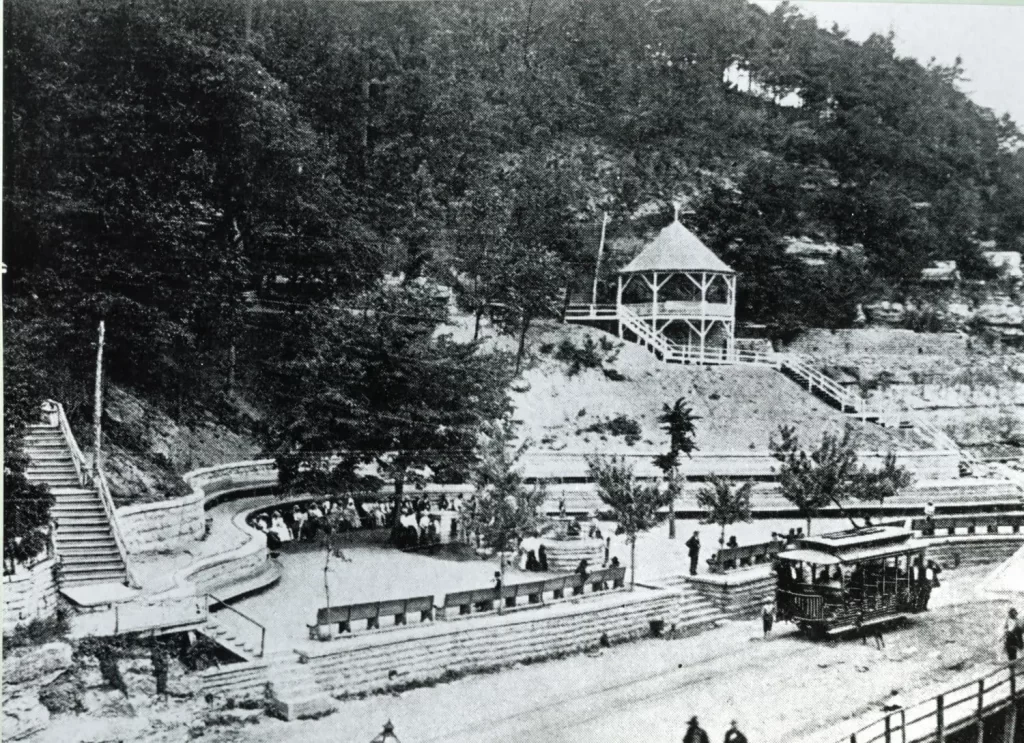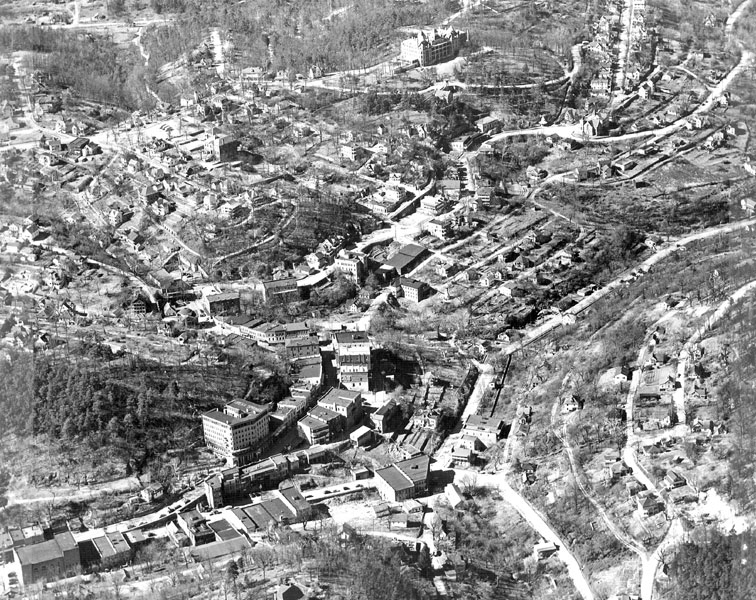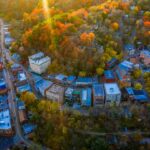The Eureka Springs Historic District was listed on the National Register of Historic Places on December 18, 1970. It was one of the earliest National Register districts listed in Arkansas and enumeration and documentation of the properties was not completed. At the time the Eureka Springs Historic District was listed on the National Register, the boundaries of the district were those of the city limits. Although since
f 970 the city limits has expanded a number of times, the boundaries of the district remain the same as when originally listed in 1970.
This nomination of the Eureka Springs Historic District is based on a comprehensive architecturn1 survey conducted over a three-year period that documented and cataloged each structure in the boundaries of the National Register district. In order to determine the range and quality of extant architectural resources each property has been reviewed by the Arkansas Historic Preservation Program to determine integrity. The high ratio of non-contributing properties in the district reflects, in large part, construction after 1955. Since the Eureka Springs Historic District was listed on the National Register in 1970, another 1 63 buildings have been constructed, significantly adding to the number of buildings that do not contribute to the district. Although 491 or 51 % of the total number of properties in the district have been determined contributing, the core of the district retains its high ratio of contributing historic properties and it is from this area that the significance of the Eureka Springs Historic District is derived.
The Eureka Springs Historic District is located in the boundaries of the city at the time the district was originally listed on the National Register of Historic Places in 1970. There are 967 properties in the district of which 49 1 (5 1 %) contribute to the historic significance. The majority of properties in the district are residential, with 101 commercial buildings, five public buiIdings, twelve churches and fifteen natural springs. The district contains 596 buildings constructed before 1955 of which 72% were built prior to 191 0. The overwhelming character of the buildings is derived from the Victorian era. Highly stylized versions of more than twenty different architectural influences are seen in the historic district. Natural elements are a significant part of the uniqueness of the Eureka Springs Historic District where houses and buildings are scattered over mountaintops, clinging to mountainsides, or nestling in the gorges of the city, each constructed uniquely to adapt to its terrain.

read more at Travel Eureka Springs


